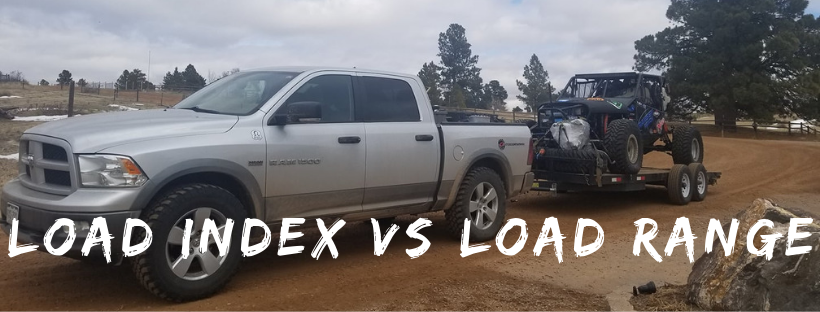
The numbers you see on the sidewall of a tire, contain valuable details about the tire. The alphanumeric code holds in itself the complete description of the tires, which helps people decide whether a tire is suitable for their vehicle or not.
A typical code on a Light Truck & SUV tire looks like; 35(Diameter)x12.5(Width)R20(Rim Size) E(Ply Rating) and our tires will have another spot on the tire with Load Index and Speed Rating. A speed rating will be an alphabetic number ranging from L-Z stating how fast the tire is rated for. Load Index will be numeric and will run from 0 - 150. The load index is typically found next to the speed rating. The load index will tell you the load capacity of the tires and will typically be first before the speed rating. For instance, our Claw 35x12.5R20 E has a load index of 121 and a speed rating of Q. To understand the actual meaning of the code, you need to read a tire load capacity chart.
Tire Load Index Capacity
The load rating of the tire displays the weight a tire can carry. The product of the load capacity of a single tire and the number of tires determines the load carrying capacity of all the tires combined. The rating of 121 shows that it has a load capacity of 3297LBS. Multiply that by four tires (4 x 3,297 = 13,188 pounds) to get your vehicle's max load carrying capacity. Always remember to install tires that have a load index that is equal or greater than your original factory-installed tires.
What is the Load Range?
Load range is the older measurement standard of "PLY Rating." This refers to the construct of the tire, which is made out of rubber and cord layers referred to as “plies.” Historically, more plies meant a tire had a larger load carrying capacity, so manufacturers would count a tire’s plies and use this number to denote carrying capacity. However, the modern construction of tires uses fewer piles without sacrificing the carrying capacity. Therefore load range simply tells how tough the tire is and the allowable PSI. For example, an “E” load range indicates that a tire is equivalent to a 10-ply construction tire. In realitly, this tire is not built with 10 plies, but rather one or two plies of equivalent strength.


CLAW II
- 275/65R20 10 PLY REMOLD USA
- Load Index: 126/123
- PLY Rating: E
- Speed Rating: R
- Tread Depth: 19/32"
- Max Load: 3,750 lbs
- Rim Width Range: 7.5-9.5"
- Tread Width: 9"


GUARD DOG
- 285/65R18 10 PLY REMOLD USA
- Load Index: 125
- PLY Rating: E
- Speed Rating: S
- Tread Depth: 19/32"
- Max Load: 3,640 lbs
- Rim Width Range: 8-10"
- Tread Width: 10.5”


WARDEN
- 35x12.5R20 10 PLY REMOLD USA
- Load Index: 123
- PLY Rating: E
- Speed Rating: Q
- Tread Depth: 17/32”
- Max Load: 3,415 lbs
- Rim Width Range: 8.5-11"
- Tread Width: 10.7"


